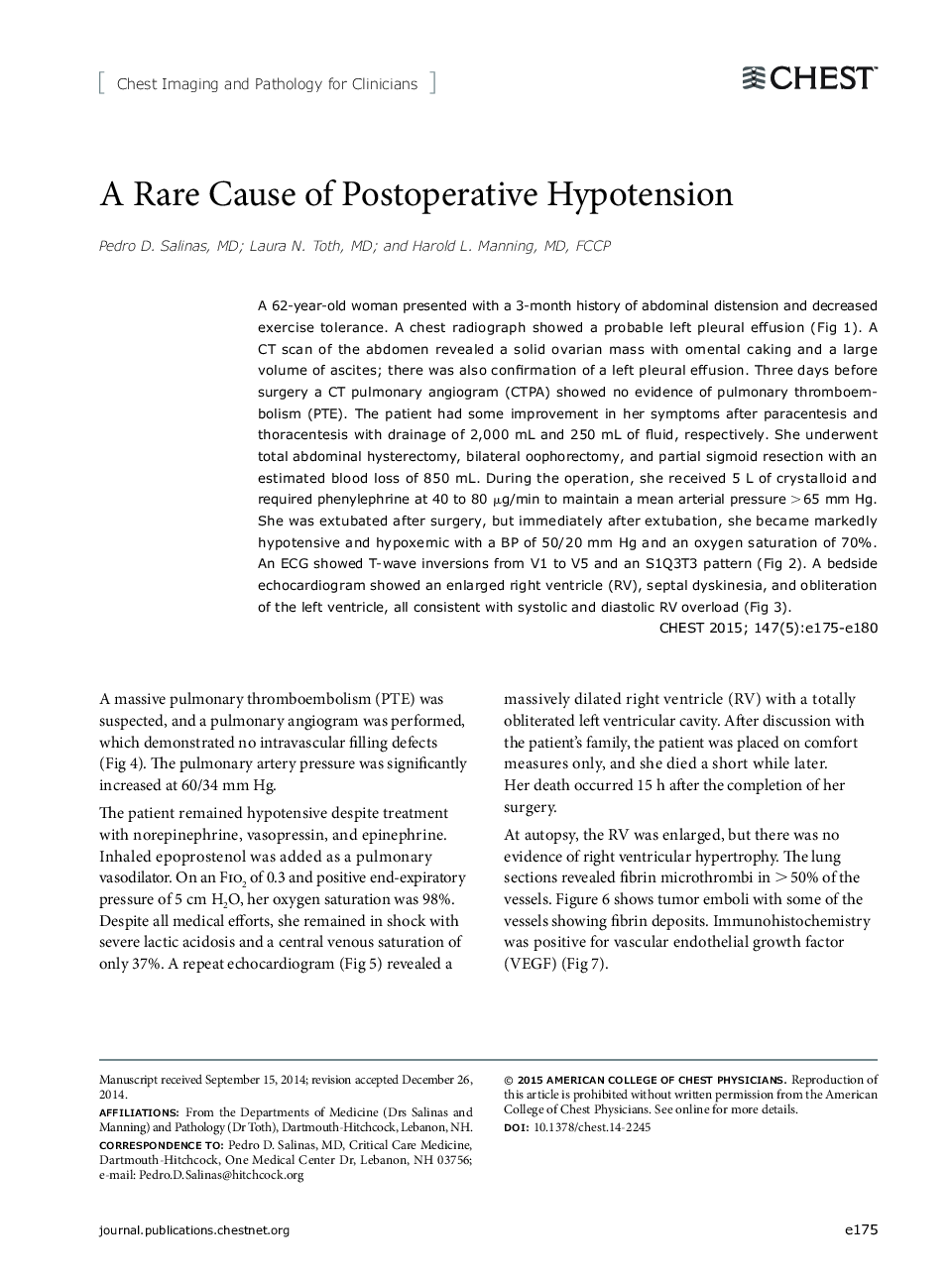| Article ID | Journal | Published Year | Pages | File Type |
|---|---|---|---|---|
| 5953388 | Chest | 2015 | 6 Pages |
Abstract
A 62-year-old woman presented with a 3-month history of abdominal distension and decreased exercise tolerance. A chest radiograph showed a probable left pleural effusion (Fig 1). A CT scan of the abdomen revealed a solid ovarian mass with omental caking and a large volume of ascites; there was also confirmation of a left pleural effusion. Three days before surgery a CT pulmonary angiogram (CTPA) showed no evidence of pulmonary thromboembolism (PTE). The patient had some improvement in her symptoms after paracentesis and thoracentesis with drainage of 2,000 mL and 250 mL of fluid, respectively. She underwent total abdominal hysterectomy, bilateral oophorectomy, and partial sigmoid resection with an estimated blood loss of 850 mL. During the operation, she received 5 L of crystalloid and required phenylephrine at 40 to 80 μg/min to maintain a mean arterial pressure > 65 mm Hg. She was extubated after surgery, but immediately after extubation, she became markedly hypotensive and hypoxemic with a BP of 50/20 mm Hg and an oxygen saturation of 70%. An ECG showed T-wave inversions from V1 to V5 and an S1Q3T3 pattern (Fig 2). A bedside echocardiogram showed an enlarged right ventricle (RV), septal dyskinesia, and obliteration of the left ventricle, all consistent with systolic and diastolic RV overload (Fig 3).
Related Topics
Health Sciences
Medicine and Dentistry
Cardiology and Cardiovascular Medicine
Authors
Pedro D. MD, Laura N. MD, Harold L. MD, FCCP,
